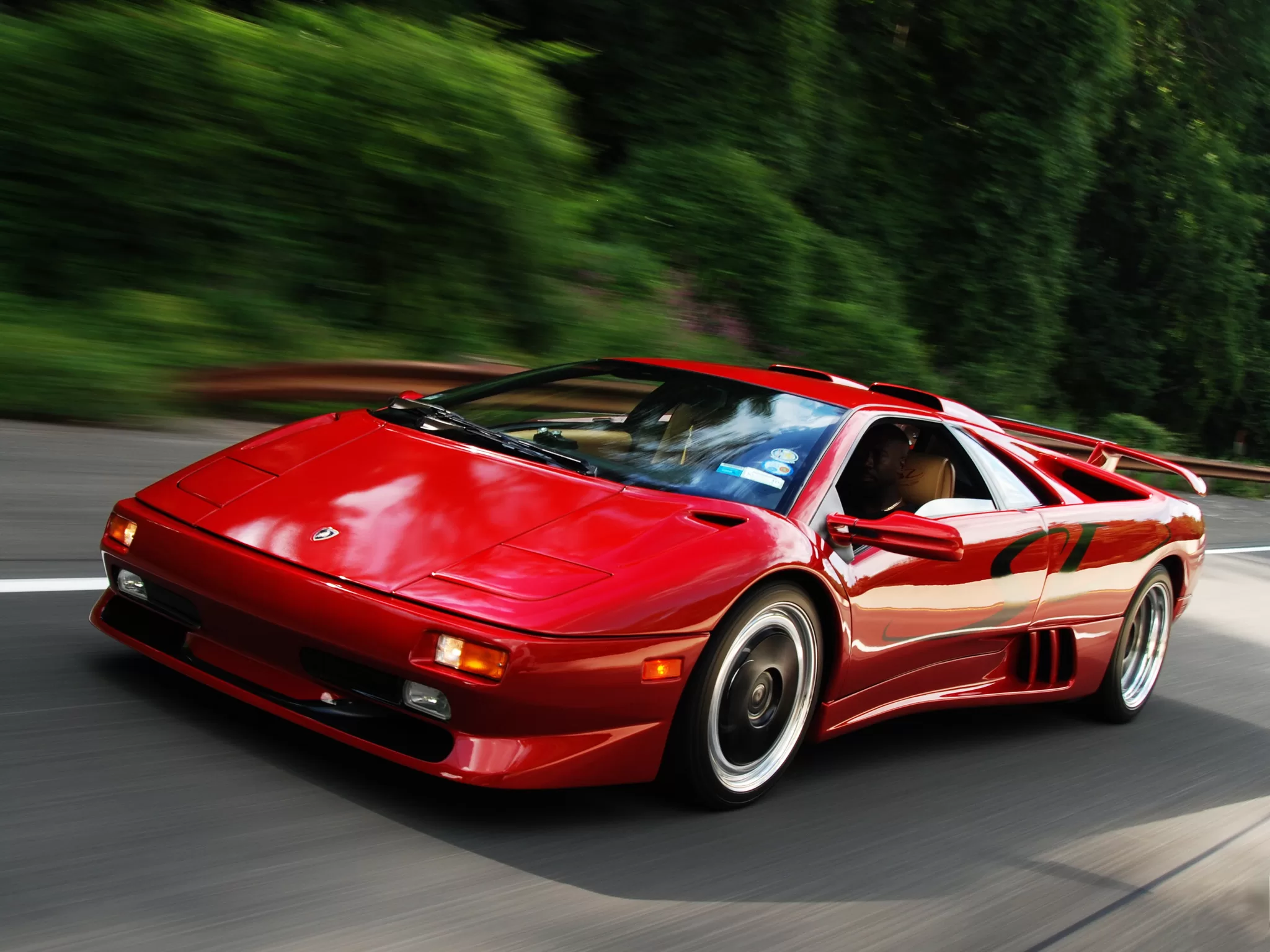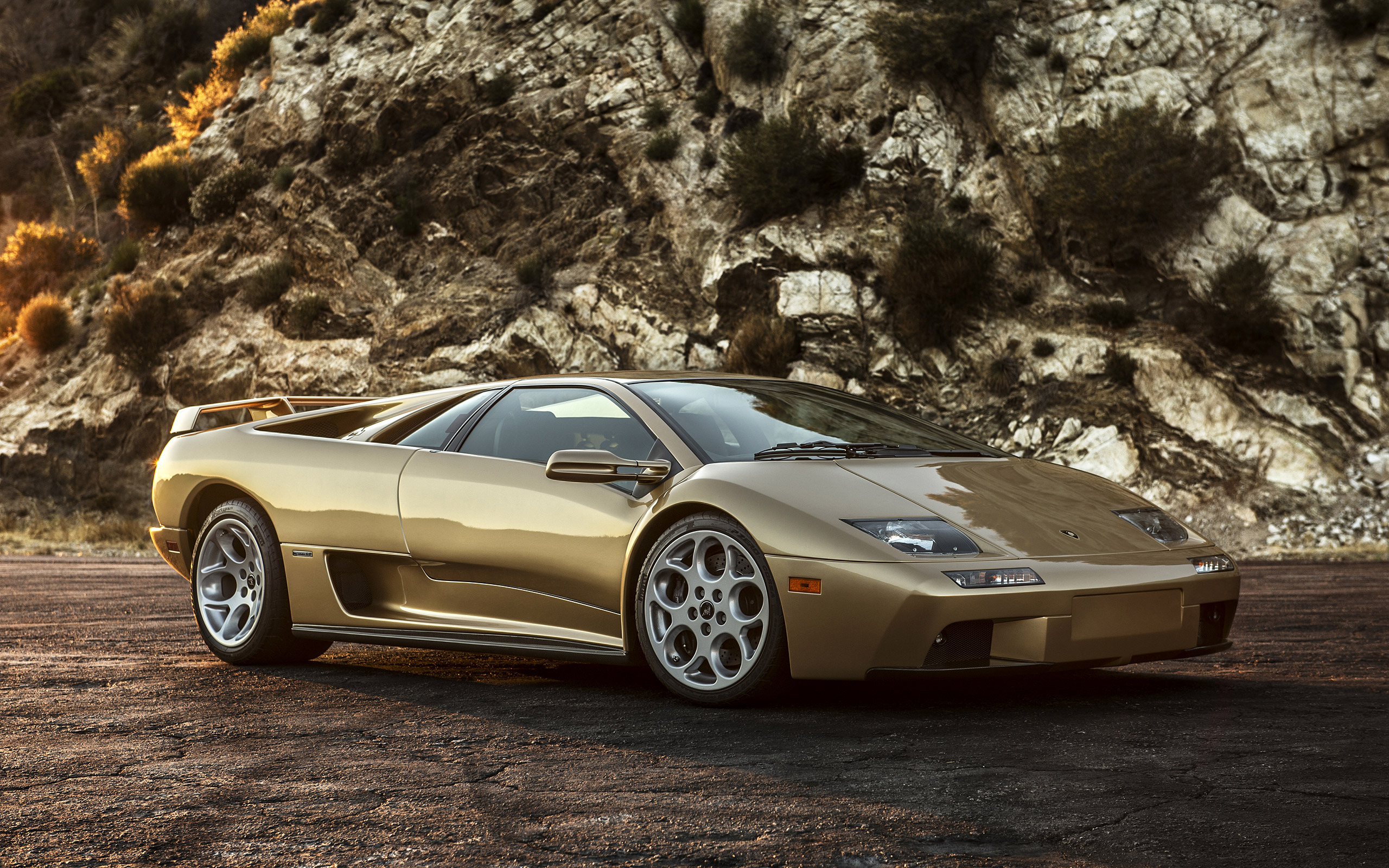Lamborghini Diablo – The First Modern Lamborghini
The Lamborghini Diablo arrived in 1990 as the long-awaited successor to the Countach. Completely redesigned and thoroughly modernized, the Diablo introduced Lamborghini to a new decade. Its sensuous lines are draped over thoroughly updated mechanical components, creating a revised aesthetic for the Italian supercar maker. The Diablo also inaugurated the nameplate’s move to all-wheel drive configurations along with delivering extreme V12 performance befitting the Lamborghini badge.
All-New Design Inside and Out
While retaining Lamborghini’s wedge silhouette theme, the Diablo sported a thoroughly refreshed look courtesy of legendary Chrysler designer Tom Gale. Its curving lines flowed elegantly from nose to tail, minimizing the hard edges and flat surfaces associated with its Countach predecessor. Inside, the cockpit received a sweeping update as well, doing away with many dated 1970s elements. The Diablo enveloped occupants in hand-stitched leather, aluminum, and carbon fiber for a contemporary supercar feel.
Powerful V12 with Racing Heritage
As expected in a Lamborghini flagship, the Diablo packed considerable firepower under the engine cover. A 5.7-liter 60-valve V12 generating 492hp motivated the car, enabling acceleration from 0-60mph in just 4.5 seconds and a top speed of 202mph. This high-revving naturally aspirated powerplant traced its roots to Lamborghini’s Formula 1 engine and the mighty Countach before it, continuing the brand’s tradition of visceral V12 performance. The engine’s refinement and flexibility complemented its potency.
Improved Chassis Dynamics
The Diablo’s chassis brought handling up to modern supercar standards as well. Revised double wishbone suspension tuning, enlarged anti-roll bars and traction control helped tame the V12’s power, delivering more poise at the limit. Feedback-intensive power steering and massive brakes with ABS benefitted driver control. Later VT all-wheel drive variants offered increased traction and stability to match the potent engine’s upgrades to 530hp. Lamborghini had refined the Diablo into a holistically developed super sports car.
More Usable Yet Extreme Supercar
Daily driving aspects saw improvement in the Diablo as well. Diablo offered air conditioning, powered seats and windows, and even cruise control for road trips. Revised ergonomics and visibility aided real-world use. Yet flipping the start switch unleashed Diablo’s fury, filling its cabin with the immense roar of one of Automobilia’s greatest V12s for a genuinely fascinating experience.
Racing Homologation Special Editions
During its 11-year lifespan, the Diablo spawned numerous special editions for collectors and driving purists. Hardcore models like the SE30 and SE30 Jota optimized track performance with racing components. The 1998 Diablo GT homologation special paved the way for Lamborghini’s expansion into sports car racing. For enthusiasts, these limited-production Diablos represent the pinnacle of 1990s Lamborghinis.
The First Modern Lamborghini
The Diablo opened a new chapter for Lamborghini, bringing thoroughly modern design, engineering, and refinement into the 1990s era. It retained the fascinating V12 performance the brand was founded upon but complemented it with newfound usability and control. Sales soared to over 2,800 units, nearly triple the Countach’s volume. For many buyers, the Diablo was their first experience with a Lamborghini that could conceivably be driven daily. Its holistic excellence made the Diablo the first truly modern Lamborghini.





